Today we’re going to be talking about the gap between Google and results and what you can do about it.
The reality is is that as Google keeps changing and search engines are evolving, the distance between what Google is focusing on and then what’s working for B2B marketers is growing wider every day and that gap keeps expanding. Today, we’re going to talk about exactly what you can do about it.
What Direction is Google Going?
Understanding where Google is going is valuable. Now, I’m not one of those people who believe that by watching Google’s every move, you can get some distinct advantage and manipulate your strategy or your approach to get results. I don’t believe that. But I do think it’s valuable to understand the direction that Google is heading and what that means for us.
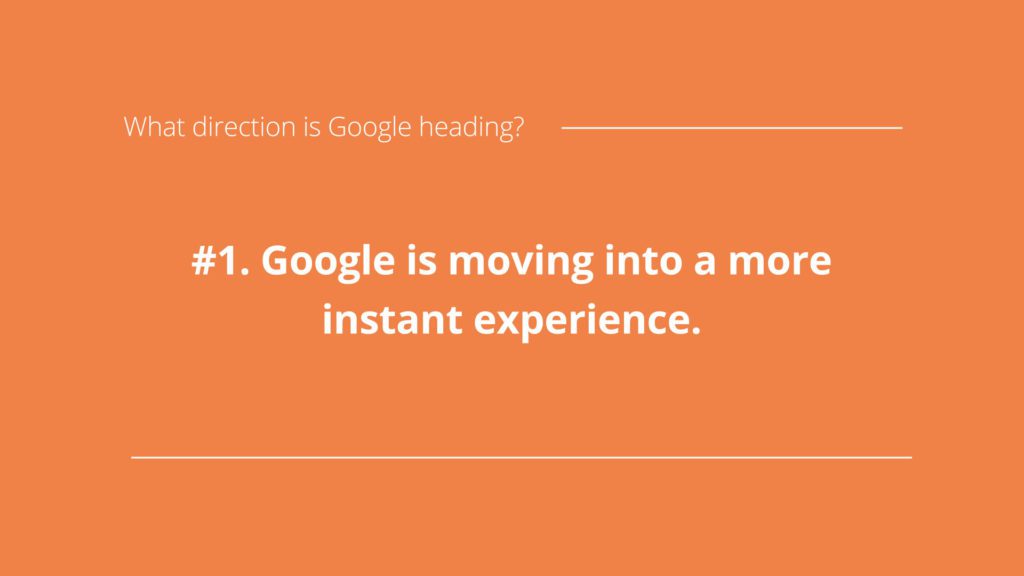
Instant Experience
First, they’re going to a more instant experience. You’re starting to see pages within a search engine results page that only have a knowledge box. There’s no other information on the page. There are no results. It’s just a featured snippet or a knowledge box (I can’t even keep up with what we’re calling it every day) that’s above the fold. They’re essentially taking someone else’s content, scraping it and featuring it.
How long they’re going to be able to do that legally, who knows? For now, what they’re trying to do is focus on the instantaneous ability to get the answer to the question you searched, and that’s important for us to understand.
Focused on Mobile
Next, they’re focused a lot on mobile right now. If you’ve ever used your phone or done a query on Google from mobile, you’ll start to understand why.
Above the fold and within all of your first scroll is just ads. You know, when you look on your desktop, you can very easily just scroll right past the ads and not even look at them. On mobile, their ads — where they still make the majority of Google’s revenue — are all above the fold and in that screen. I think this is a key reason why.
Blending Advertising with Organic
Thirdly, they’re blending advertising with organic and they’re testing all the time different ways to change the color of the word “ad“, to change the layout of the ads because they’re trying to make it so it’s very difficult to know what’s an ad and what’s not.
Why? They don’t want people to create a bias against ads and stop clicking on their ads. And, “Oh, my God. What would happen to all of our money?” Google is very, very concerned with creating a seamless experience now where it’s hard to tell what’s an ad and what’s organic.
New Types of Ads
Google is launching new types of ads. They are essentially taking local services, you can actually now see different types of ads — specially in the Bay for home improvement services — you can book an appointment directly through Google My Business with places like Sephora in certain cities.
They’re experimenting with new knowledge graphs, new featured snippets, new things when you click on a result, go back and expands additional results. Everything in Google is changing as they’re constantly evolving and becoming a better search engine so they can better answer people’s questions.
Searchers Still Come First
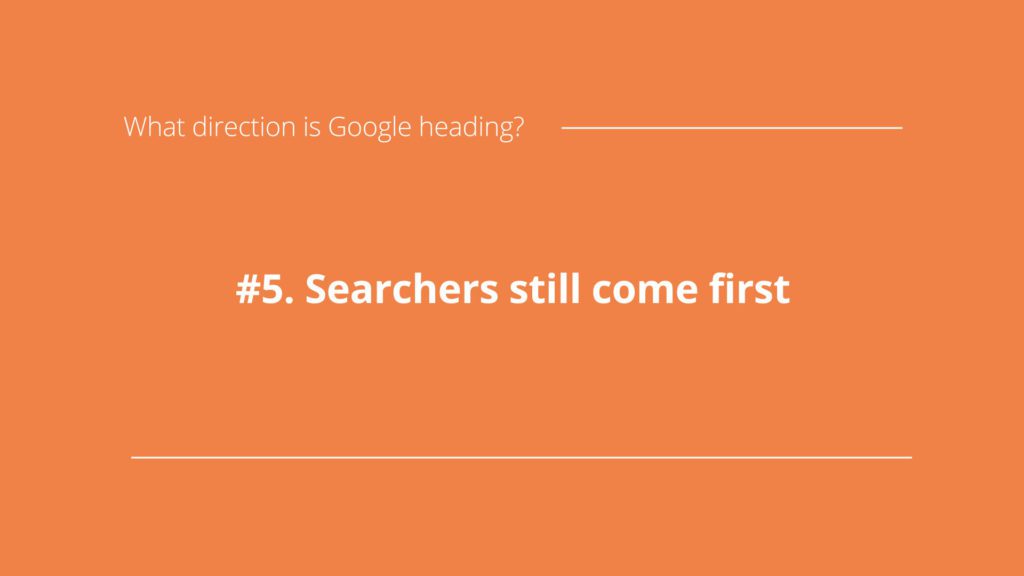
Now something to be aware of here is they are not doing this for the sake of the business owners, right? While they make their money off the business owners, they only make their money off the business owners because they are the best solution to the searchers. The searches have always come first for Google and still will continue to do so. It’s important to recognize that.
Valuing Deeper, More Thorough Content
Tactically, from an SEO perspective, we see Gooogle valuing deeper, more thorough content. The days of 300-word blog posts are dead and gone. You need to be the best answer to the question people have.
And now remember, there is zero barriers to entry to content marketing. Anybody can spin up a website and write an article. So how do they determining which article to rank? It’s not just links anymore, it’s not just the depth of your content, it’s not just your title tags and your H1s, it’s your overall brand and the footprint you’ve left within their entire data set, and it’s important to think beyond just your own website.
Moving Away From Strictly Keyword Targeting
They’re getting away from just strictly keyword targeting. Meta keywords left in what? 1999. And now just because you stuff a bunch of keywords in your title tag or put them in your H1s doesn’t mean you’re going to rank.
Now, I’m also not saying that keywords aren’t important, but for clarity’s sake what I’m saying is that you need to be the best answer to the questions people have about the services you provide, not just have keywords stuffed into the title tag of the page you’re trying to rank for those services. In other words, you need to think about the entire audience, the entire buying experience, and then position your brand, your website throughout in as many places as possible.
Google Doesn’t Rank Websites, Google Ranks Pages
It’s important to remember that Google does not rank websites, Google ranks pages.
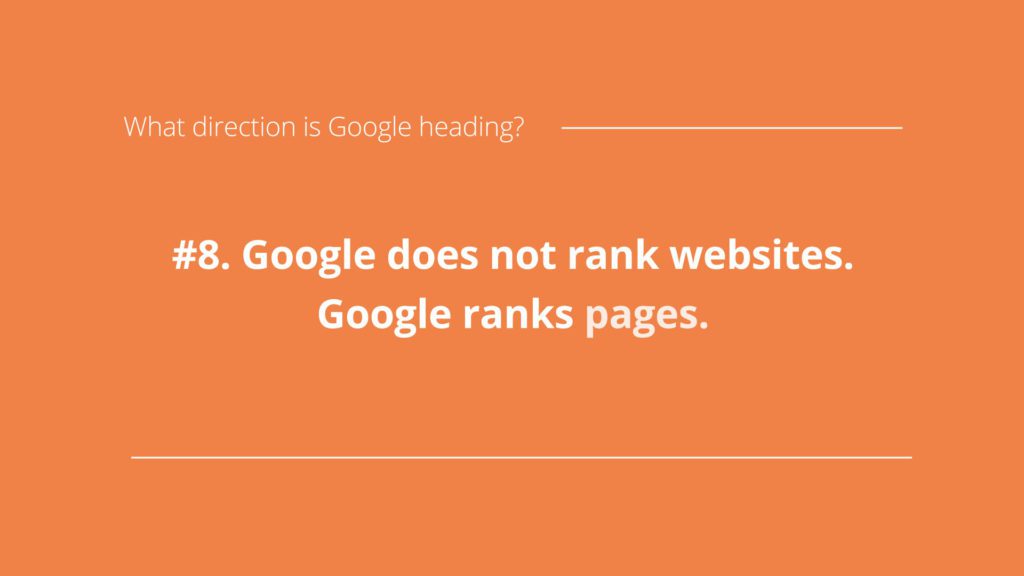
So building links simply to your website is becoming increasingly less important than building relevant links from within your industry to relevant pages to your audience.
And by keeping relevancy and authority within your vertical to the pages you’re trying to rank, for the keywords you’re trying to rank for, you’re going to see tremendous success.
Now, we’ve talked a lot about where Google is going and a little bit about what you can do about it, but let’s talk about now where B2B marketers are going, what we’re seeing across our portfolio and the direction B2B marketers are heading.
Where are B2B Marketers Headed?
I just had a conversation this morning with a very talented CMO of a large B2B software company. And one of the first things they asked us is, “We’re spending quite a bit on AdWords but I really don’t want to be doing that anymore. Do you think we could spend less?”
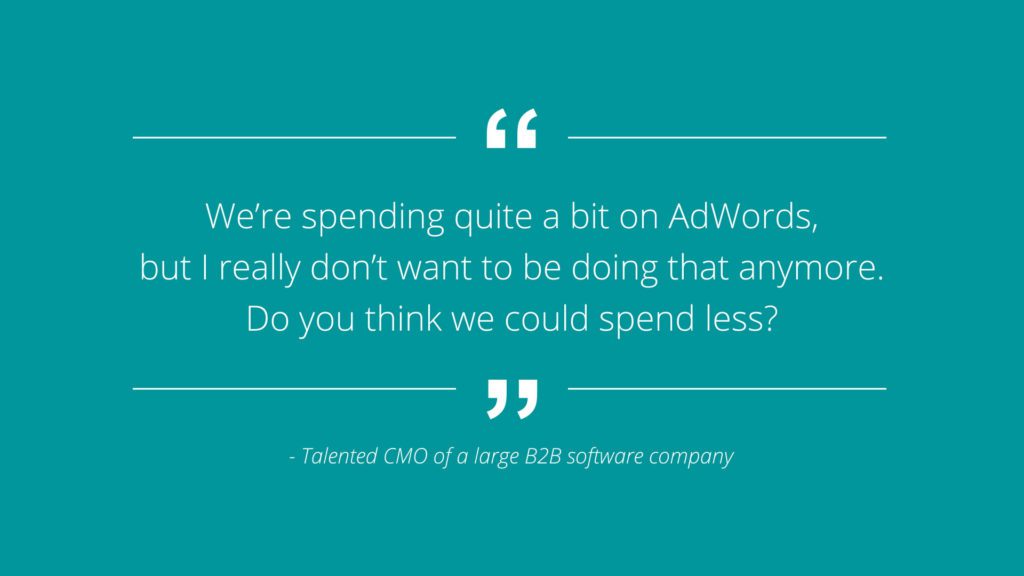
I hear this on a day-to-day basis. Now, I think a little bit of it is understanding how much we really can spend on an opportunity while recognizing that AdWords is definitely not your most efficient channel oftentimes. Let’s talk a little bit about why.
Every time a competitor enters your marketplace for a keyword, they essentially drive up the bid cost. Then if you want to stay number one, you then drive up the bid cost again. So for example, with our portfolio, we try to position people within two or three. We’ve found the cost per acquisition from ranking number one for AdWords to be exorbitant and drive up the cost so much that it makes AdWords unprofitable. So it’s very, very critical that you understand the value of positioning yourself and the average position you’re in within AdWords.
Thinking of Social Differently
The next thing we see a lot of people doing is they’re starting to dip their toes into social. They’re starting to think about social a little differently.
So what’s happening is people are wanting to start to experiment with LinkedIn. Now, there’s still a problem, right? Because I’ve got about, I’d say, 15% of the portfolio wanting to experiment with paid social but the majority has already experimented and found they couldn’t generate sales qualified opportunities from it. So it’s not that you can’t generate conversions. See, our own LinkedIn campaigns, we were converting eBook downloads at 40% from VPs of marketing at B2B SaaS firms and that was great. It was so good that we thought, “Let’s hire an SDR to then follow up with all these leads and we can generate opportunities!”
Unfortunately, what we found is timing is still the most critical part of lead generation and turning people from leads to opportunities. And because people weren’t explicitly looking for our services, they were simply gathering information, it was difficult to turn these conversions into opportunities.
With that being said, we still see the majority of the market starting to want to experiment with paid social using psychographic and firmographic targeting.
The Value of Third Party Platforms
Another big thing we’re starting to see is in-house marketers starting to realize the value of third-party platforms. We preach about this a lot here in what we call share of SERP. But we’re starting to see in-house demand generation people, VPs, CMOs starting to think about how their brand is being positioned across an entire search engine results page, not just their own website. This is critical.
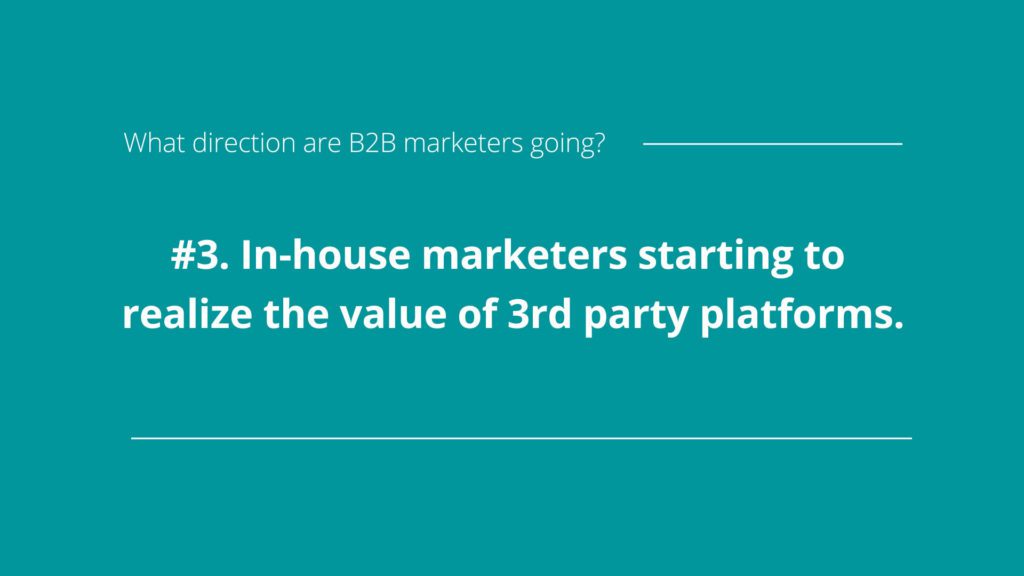
Account-Based Software
And last, but definitely not least, you’re going to see two things. If you’ve been to any type of conference in the last 12 to 24 months, it’s all account-based software. Account-based marketing is really catching steam.
Now, account-based marketing, and if you talk to the software providers, still has a couple of gaps, number one being timing. Once again, even though services like Bombora and other places, it’s very difficult to know if someone is explicitly looking for what you offer or if the timing is right. The same things that make sales development challenging make account-based marketing challenging. With that in mind, I think it’s an incredibly powerful tactic that is being leveraged incredibly well across a lot of companies and something we’re starting to double down on here.
Attribution
And then lastly, attribution, tools like Bizible and others out there are starting to really push the limits as to can we make everything we do fully attributable to the sources and channels that we’re going after, that we’re spending on so we can look at actual ROI. I think this is an amazing development for B2B marketing and something we need to be aware of.
We’ve talked about where Google is heading, we’ve talked about where we see our in-house B2B marketing teams heading from our client portfolio. Now, lastly, I want to give you three things that you can do based on that information, understanding where Google is going, understanding where the market is going and then what you can do about it.
3 Tactics To Fill in the Gap
Now, one of the first things you can do is take your largest industry keywords. For us, it might be “SEO company” or “PPC agency” or “SEO agency“, and then you can put an underscore after the final letter of that keyword. So if you’re a healthcare software, type “Healthcare software,” then underscore into Google.
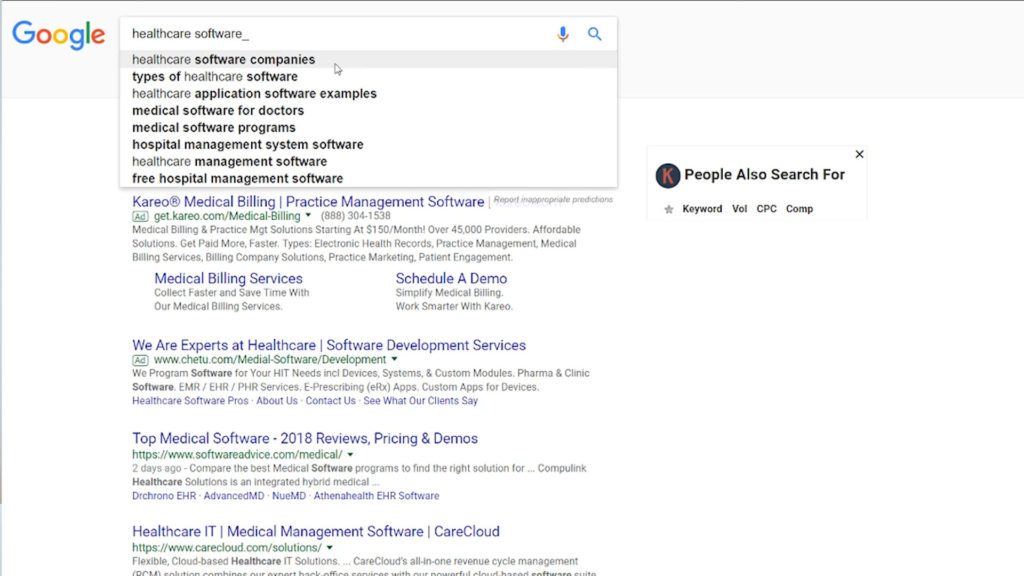
What that’s going to do is pull the people also search for, it’ll pull the related queries right there. What that’s going to allow you to do is you can start to see what the buying journey for your clients or potential clients looks like. So for us, if you search “PPC agency” and put an underscore, the wild card, we oftentimes see pricing there. So now what do we do? We write the definitive guide on “PPC Agency Pricing“.
What we’re showing Google is we’re not only the best answer for your query, “PPC agency,” but we’re the best answer to all the questions people have during that buying experience. In other words, we’re creating that topical map we talked about earlier and we’re aligning yourself with Google’s goals. This is an amazing tactic that you can execute on right away.
Prioritize Pages That Generate The Most Organic Revenue
Next, you need to prioritize the pages that are going to generate the most organic revenue for you. Those are traditionally the services you provide or the solutions your product solves. So you’re either a text messaging software, you’re an SEO agency, you’re a hard case, you’re an insurance company. Then what you need to look at is ask yourself how close are you to ranking for those keywords.
We do what we call a bubble keyword analysis. You can take a tool like SEMrush and filter by position. So position greater than five and less than 15 (I think you get a free trial with SEMrush so you can try this out).
Then what you’re going to want to do is you’re going to want to start to point internal links at the pages you’re trying to rank and you’re going to try to start building external links by guest posting. By guest posting, you can go after your industry partners or people you have relationships with or industry publications, and you’re going to want to link back either in the body of your text or in your bio where you do get a little more freedom to get away from editorial control if you don’t have it. What you’re going to want to do is be strategically pointing links towards the pages you’re trying to rank that are within striking distance.
Execute on Share of SERP
Then lastly, you’re going to want to execute on share of SERP. You’re going to want to start plugging in those keywords that are most valuable to your business into Google and start to look through the entire page.
- Are we showing up on AdWords?
- Is our website ranking organically?
- Are we showing up on third-party directories like Capterra, Software Advice, G2 Crowd, GetApp, and others?
- Are we showing up on Quora, question sites?
- Do our display ads show us on Forbes and other publications?
- Is our brand prevalent across the terms that generate the most revenue for our business?
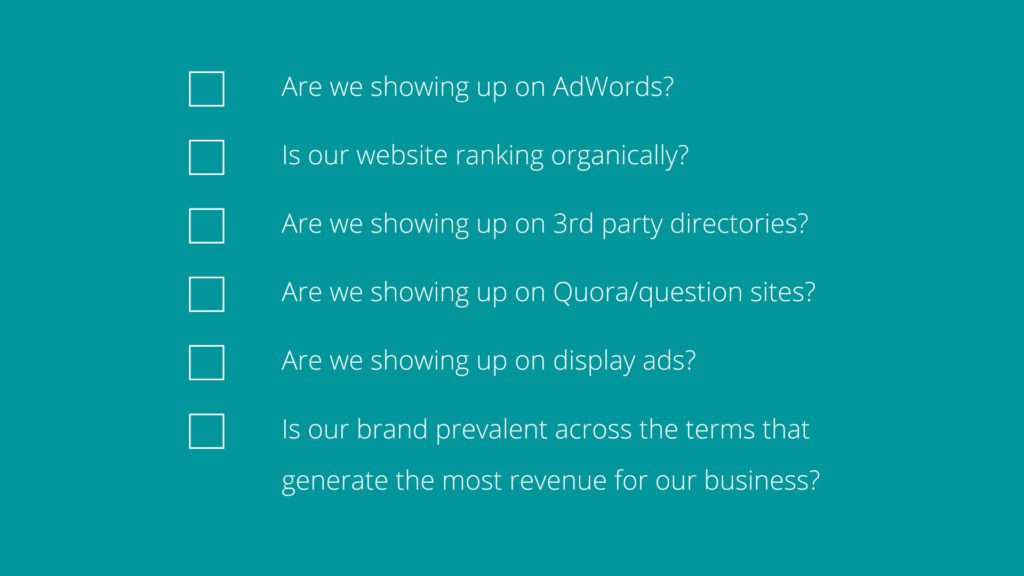
If you answered yes, then you are doing far better than the competition in positioning yourself to be found when we know the timing is right. And if marketing is all about timing, then marketing is all about share of SERP because it’s positioning you as the best possible answer to the questions people have when the timing is right. So please execute on these strategies.
Leave a comment or subscribe to the channel and we’d love to see you around on all our next videos. Have a great day!
-
 CEO
Garrett Mehrguth
CEO
Garrett Mehrguth
Did you enjoy this article?
Share it with someone!
